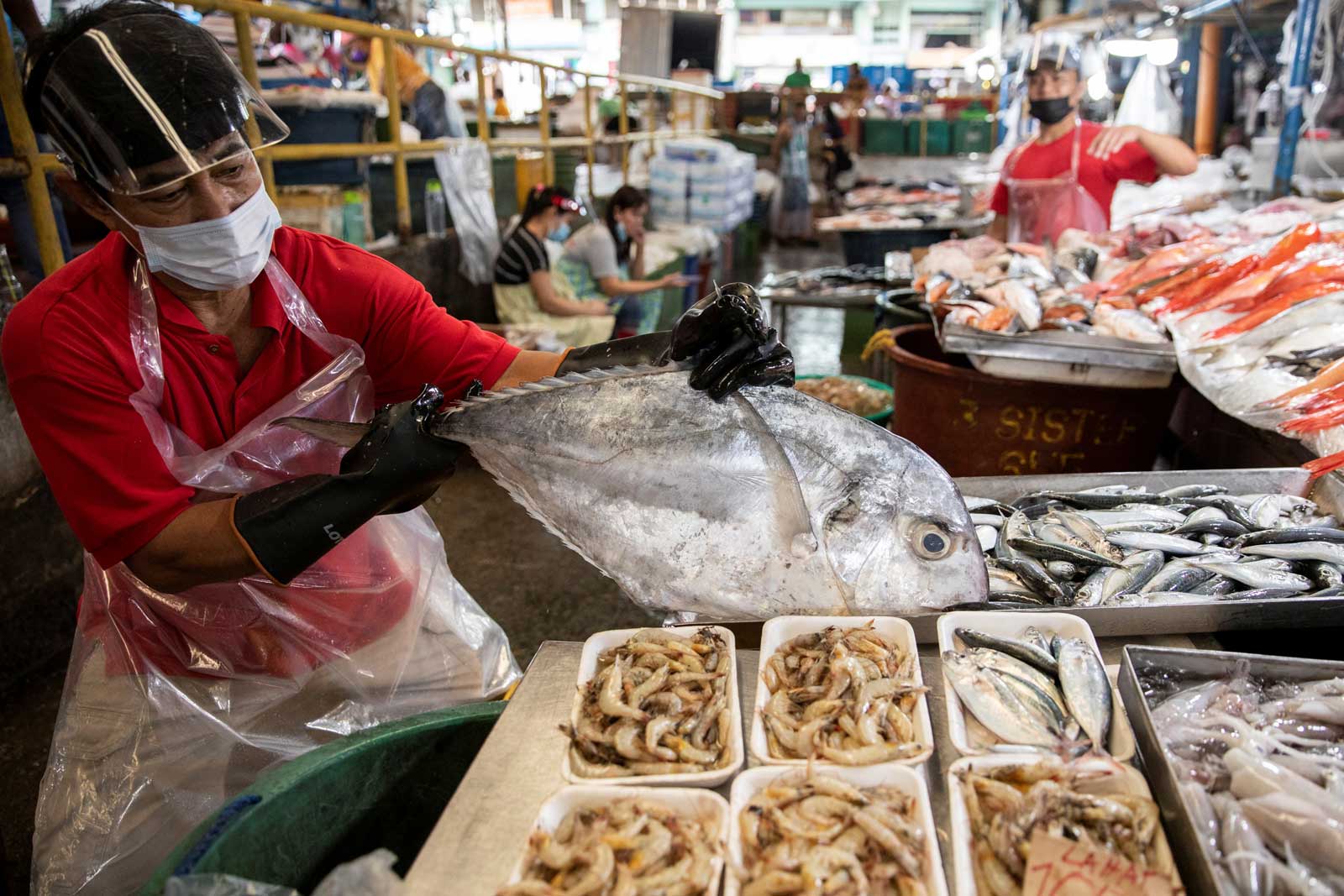
By Luz Wendy T. Noble, Reporter
INFLATION likely accelerated further in March due to elevated food and fuel prices, remaining beyond the central bank’s target range for a third straight month, a BusinessWorld poll showed.
The median estimate of 13 analysts in a BusinessWorld poll last week stood at 4.8%, near the upper end of the 4.2-5% estimate given by the Bangko Sentral ng Pilipinas (BSP).
If realized, this would be quicker than the 4.7% print in February as well as the 2.5% a year earlier. It would also exceed the BSP’s 2-4% target range.
The Philippine Statistics Authority will report the official March inflation data on April 6.
“Food inflation together with higher transport costs will exert upward pressure on headline inflation,” ING Bank N.V. Manila Senior Economist Nicholas Antonio T. Mapa said.
Prices of food staples such as meat and vegetables have jumped in the past months due to supply disruptions following the typhoons in the latter part of 2020 as well as the African Swine Fever (ASF) outbreak. In response, the government has imposed a 60-day price cap on certain pork and chicken products in Metro Manila which will end on April 8.
Some analysts pointed out that rising global commodity prices are affecting local consumer prices.
“Despite subdued domestic demand due to ongoing lockdown restrictions, global commodity prices remain elevated, likely leading to ongoing price pressures domestically,” HSBC Global Research economist Noelan Arbis said.
Crude oil prices have also remained high in anticipation of pent-up demand alongside signs of recovery in the world economy. The Suez Canal crisis last month also contributed to an uptick in global oil prices, which then slipped after the waterway reopened.
Data from the Department of Energy showed gasoline, diesel, and kerosene prices have increased by P6.15, P4.60, and P3.50 per liter as of March 30 year to date.
Central bank officials have said the inflation uptick seen in the previous months is driven by low supply and is “transitory” in nature, like previous supply-side shock episodes of higher inflation.
BSP Governor Benjamin E. Diokno has said that demand-side inflation factors “remain largely subdued while core inflation is showing relative stability.”
“The March inflation print could give a clue if the supply-side pressures on inflation during the preceding months are already spilling over on core inflation,” said Alvin Joseph A. Arogo, vice-president and head of equity research division at Philippine National Bank.
UnionBank of the Philippines, Inc. Chief Economist Ruben Carlo O. Asuncion said inflation will likely reach its peak by May before easing.
In its March 25 policy-setting meeting, the central bank raised its annual inflation forecast to 4.2%.
BSP Deputy Governor Francisco G. Dakila, Jr. said inflation will likely decelerate below the midpoint of their 2-4% target towards the fourth quarter.
Most analysts are of the view that the March inflation print will make the case stronger for the BSP to remain accommodative.
The central bank retained its “prudent pause” in March, keeping the overnight reverse repurchase, lending, and deposit rates at all-time lows of 2%, 2.5%, and 1.5% for three consecutive policy meetings.
“Our sense is that the BSP will be in no rush to tweak its accommodative stance since the start of the COVID-19 pandemic. Like all other Asian emerging market economies, the BSP will not deviate from its current monetary policy stance,” Mr. Asuncion said.
Meanwhile, Mr. Mapa noted how the central bank stressed the country is not yet seeing reflation and maintained that a quicker increase in the consumer price index during the previous months were driven by supply disruptions.
Mr. Diokno said the Philippines is not experiencing reflation or the act of inflation being back to its long-term trend after an economic downturn. He said they remain watchful for signs of second-round effects caused by higher inflation and will act accordingly when the need arises.
“It looks clear that monetary authorities will be willing to accommodate first-round effects (ASF, oil price spike) and only react if inflation expectations are de-anchored, second-round effects (transport and wage adjustments) manifest, or both occur,” Mr. Mapa said.
On the other hand, Sun Life Financial economist Patrick M. Ella said the central bank is unlikely to move rates “unless growth deteriorates due to the new round of lockdowns.”
Metro Manila and surrounding provinces Laguna, Cavite, Bulacan and Rizal are under the strictest form of lockdown until April 11, as the government tries to curb the spike in coronavirus infections.
Mr. Diokno has vowed to remain accommodative until the country’s recovery is on a more stable footing, adding that early exit strategies from policy responses may pose risks to the economy and to financial stability.
The Monetary Board has six more policy-setting meetings left this year, with the next one set on May 13.


